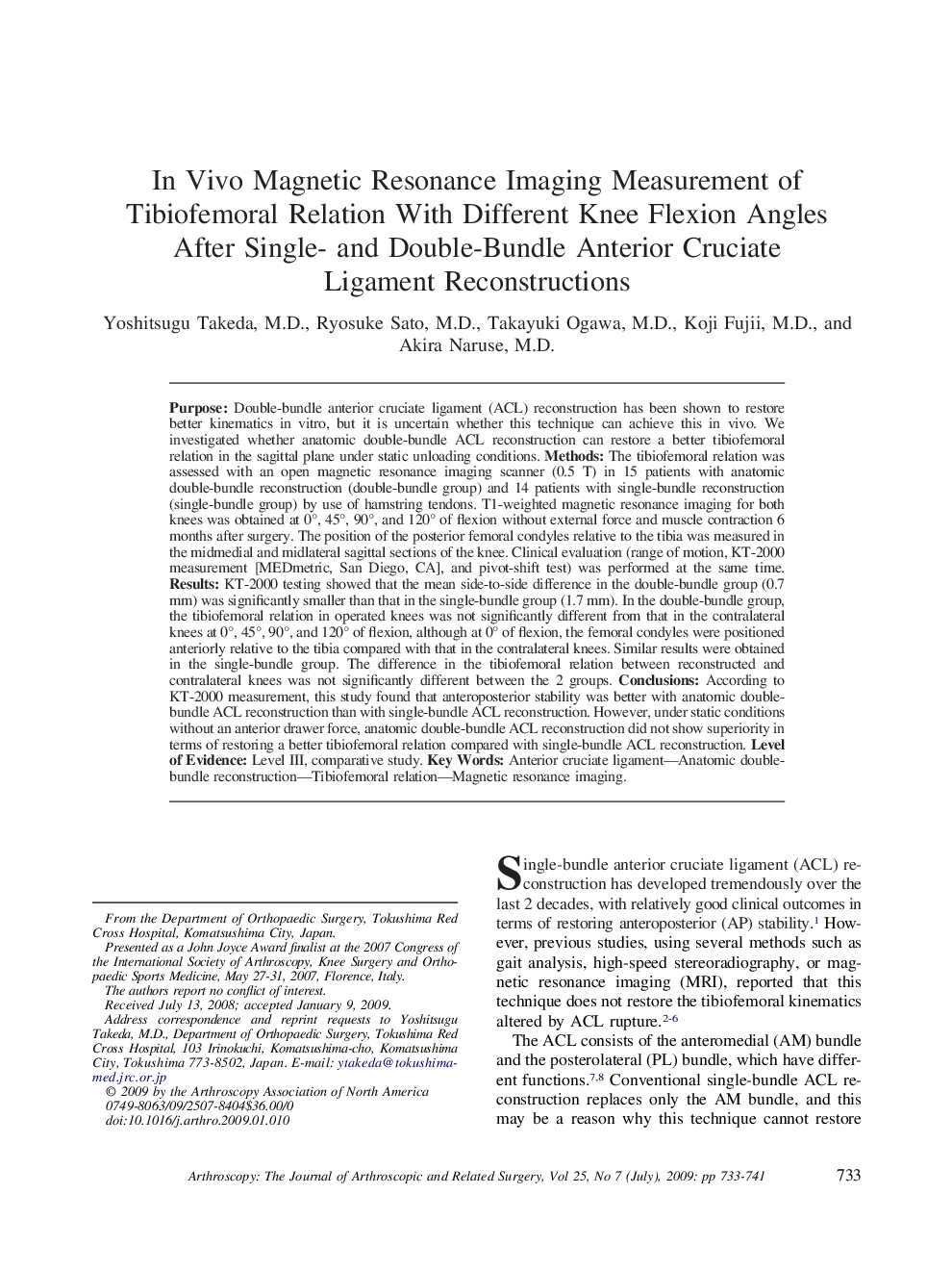| کد مقاله | کد نشریه | سال انتشار | مقاله انگلیسی | نسخه تمام متن |
|---|---|---|---|---|
| 4045444 | 1603569 | 2009 | 9 صفحه PDF | دانلود رایگان |

PurposeDouble-bundle anterior cruciate ligament (ACL) reconstruction has been shown to restore better kinematics in vitro, but it is uncertain whether this technique can achieve this in vivo. We investigated whether anatomic double-bundle ACL reconstruction can restore a better tibiofemoral relation in the sagittal plane under static unloading conditions.MethodsThe tibiofemoral relation was assessed with an open magnetic resonance imaging scanner (0.5 T) in 15 patients with anatomic double-bundle reconstruction (double-bundle group) and 14 patients with single-bundle reconstruction (single-bundle group) by use of hamstring tendons. T1-weighted magnetic resonance imaging for both knees was obtained at 0°, 45°, 90°, and 120° of flexion without external force and muscle contraction 6 months after surgery. The position of the posterior femoral condyles relative to the tibia was measured in the midmedial and midlateral sagittal sections of the knee. Clinical evaluation (range of motion, KT-2000 measurement [MEDmetric, San Diego, CA], and pivot-shift test) was performed at the same time.ResultsKT-2000 testing showed that the mean side-to-side difference in the double-bundle group (0.7 mm) was significantly smaller than that in the single-bundle group (1.7 mm). In the double-bundle group, the tibiofemoral relation in operated knees was not significantly different from that in the contralateral knees at 0°, 45°, 90°, and 120° of flexion, although at 0° of flexion, the femoral condyles were positioned anteriorly relative to the tibia compared with that in the contralateral knees. Similar results were obtained in the single-bundle group. The difference in the tibiofemoral relation between reconstructed and contralateral knees was not significantly different between the 2 groups.ConclusionsAccording to KT-2000 measurement, this study found that anteroposterior stability was better with anatomic double-bundle ACL reconstruction than with single-bundle ACL reconstruction. However, under static conditions without an anterior drawer force, anatomic double-bundle ACL reconstruction did not show superiority in terms of restoring a better tibiofemoral relation compared with single-bundle ACL reconstruction.Level of EvidenceLevel III, comparative study.
Journal: Arthroscopy: The Journal of Arthroscopic & Related Surgery - Volume 25, Issue 7, July 2009, Pages 733–741